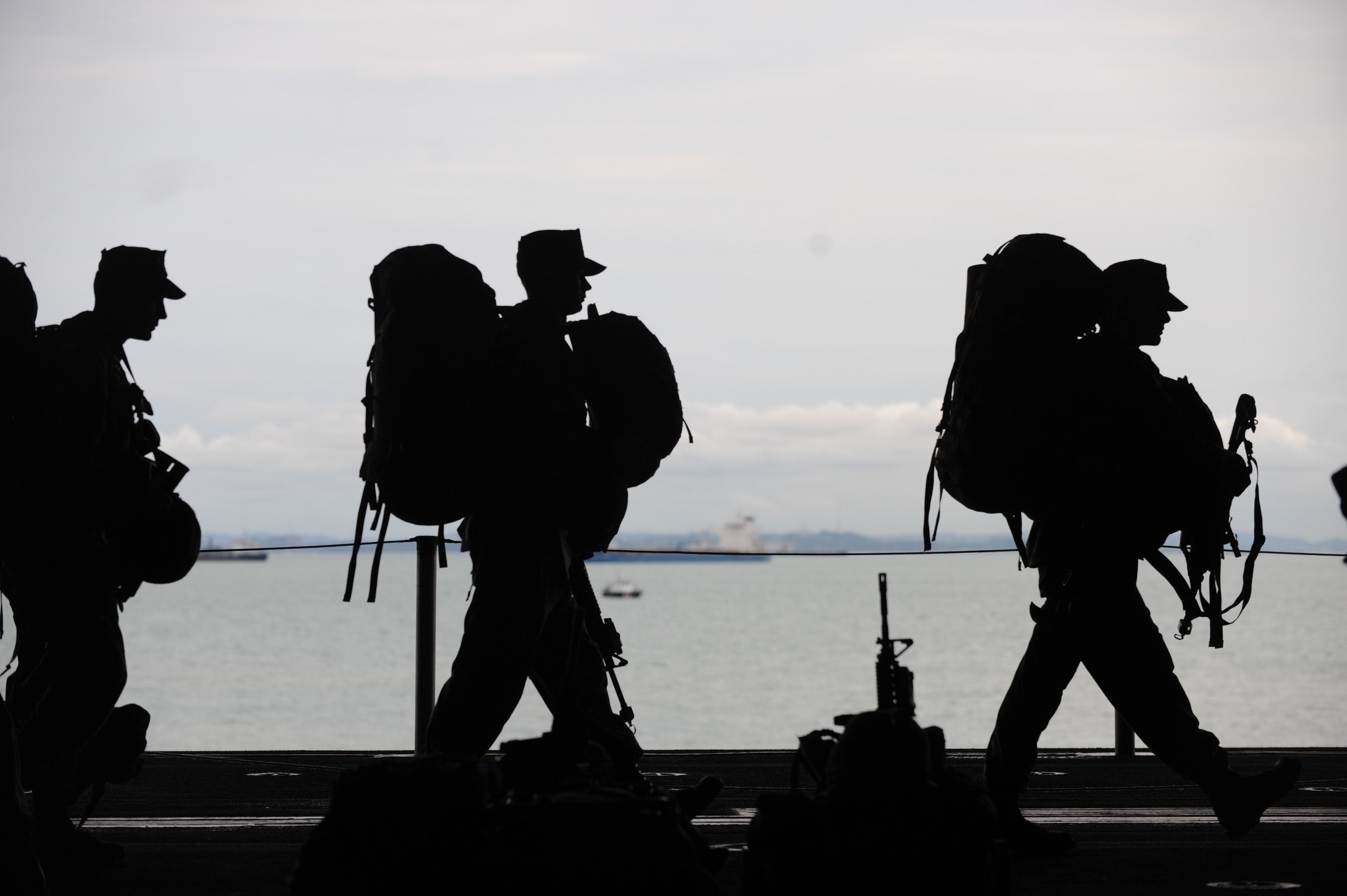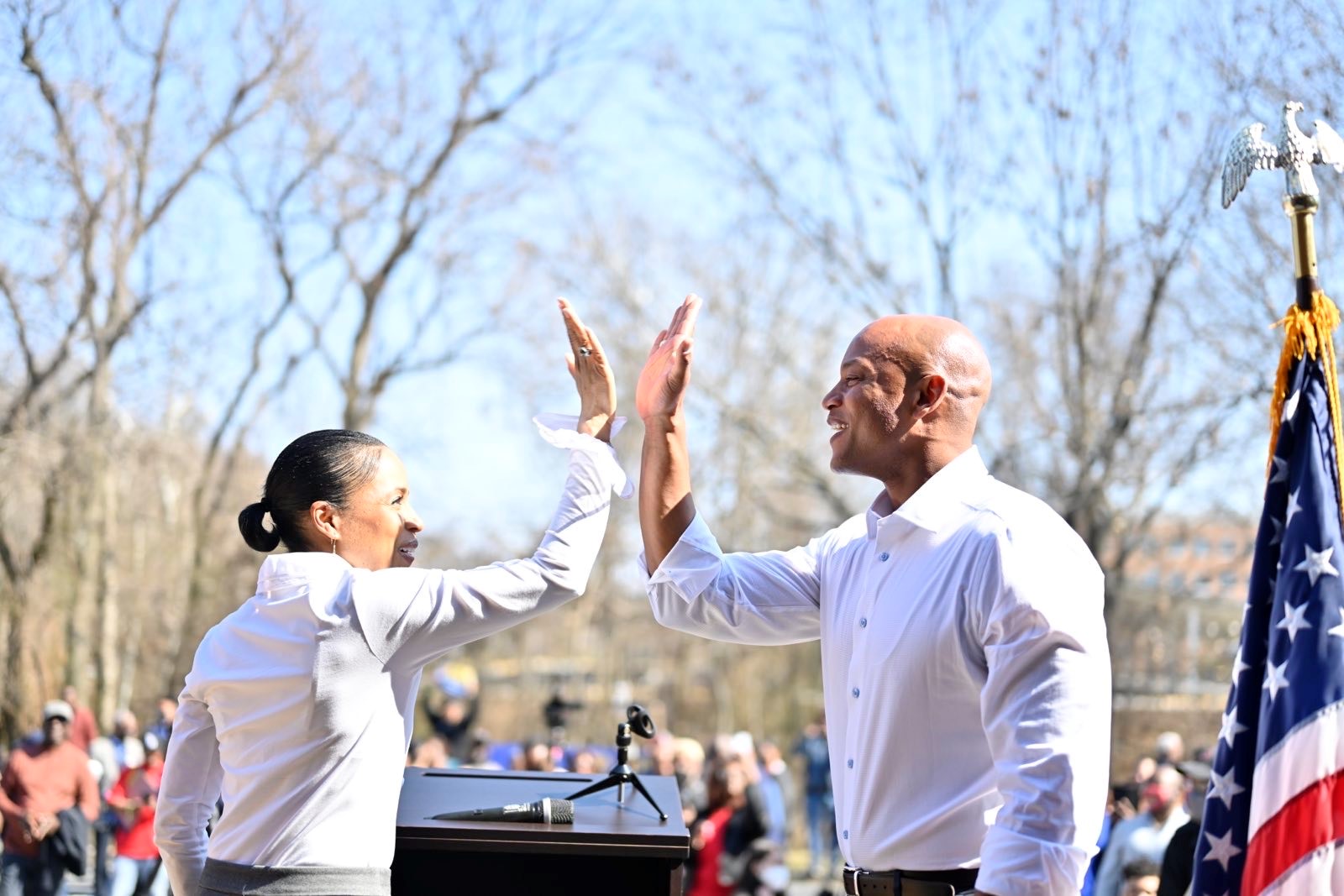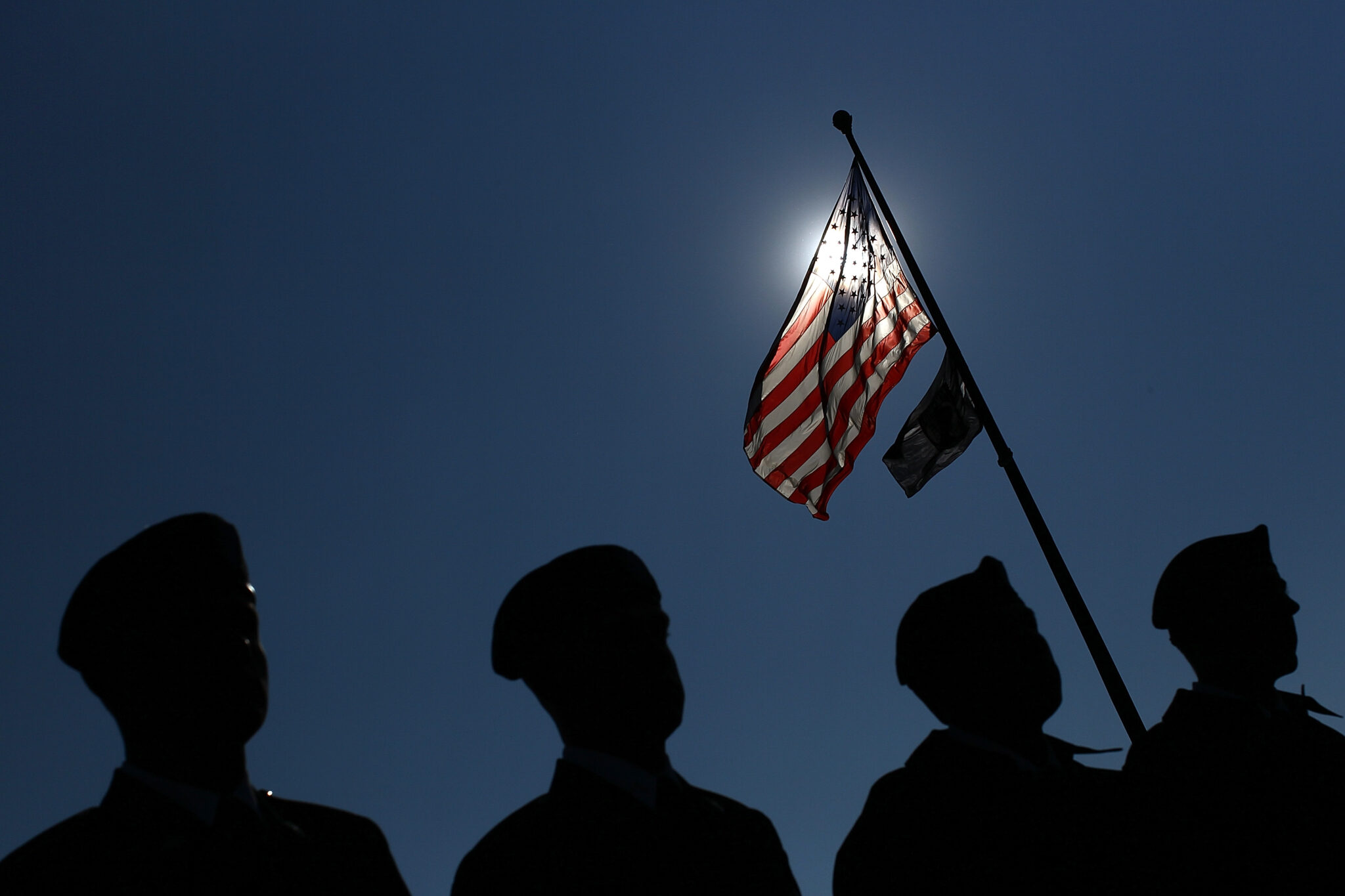Military in Md. at Risk From COVID-19: ‘Anxieties Are Really High’

The Department of Defense is on course to get a major funding boost as the U.S. military is drawn into the nation’s war against an “invisible enemy.”
The issue is of special concern in Maryland — home to more than a dozen military bases and a sizable military population. As of last year, Maryland claimed roughly 50,000 service members and about the same number of civilian Defense Department employees, according to the department.
The U.S. Senate overwhelmingly adopted a $2 trillion spending package on Wednesday night that would inject $10.5 billion into the Defense Department as it responds to the COVID-19 pandemic, according to the Senate Appropriations Committee. The department’s fiscal year 2019 budget was nearly $700 billion.
The U.S. Department of Veterans Affairs, meanwhile, would get $20 billion for health care, medical facilities and more.
More than half of the Defense Department funding is geared toward health and safety, such as medical care and treatment for service members and families; protective equipment for personnel; and support for treatment facilities at home and abroad.
Democratic Rep. Anthony G. Brown of Maryland, vice chairman of the U.S. House Armed Services Committee and a retired colonel in the U.S. Army Reserve, told Maryland Matters the “plus-ups” for the Defense Department are needed to protect service members and their families, maintain readiness and support the military’s participation in the “whole of government” response.
“When you talk about essential services, you don’t get any more essential than the defense of our country,” Brown said. “The need to maintain military readiness is just as, if not more, important today.”
The Senate’s “Phase 3” bill is slated for a vote in the U.S. House on Friday morning and has the support of President Trump, who said Wednesday he would “sign it immediately.”
Service members eligible for civilian benefits
Military members and veterans are also eligible for provisions aimed at the general public, which include direct payments up to $1,200 for adults and $500 per child, unemployment insurance benefits, student loan deferrals and funding for child care and education.
“Military members and families are entitled to the same relief as anybody else is,” Sen. Tim Kaine, a Virginia Democrat who sits on the Senate Armed Services and Foreign Relations Committees, said Wednesday in a conference call with reporters.
Last week, Trump signed into law a “Phase 2” bill that grants free access to tests for the virus, boosts paid sick leave, and strengthens unemployment insurance, among other things. The law’s paid sick leave provisions don’t apply to all Americans, but troops are covered by military paid sick leave policies, Brown’s spokesman Christian Unkenholz said.
Brown also said he backed funding for the U.S. National Guard, which would get $1.5 billion in the Senate bill. On Sunday, Trump said the federal government would fund approved U.S. National Guard response efforts.
Nearly 10,000 National Guardsmen are currently performing a variety of missions in response to pandemic response efforts, with more expected to join the effort soon, according to the Pentagon. In Maryland, National Guard troops are supporting on-site, drive-by testing, Brown said.
Brown also backed increased funding for research and development on U.S. military bases. He pointed to the role that the U.S. military has played in response to other health crises, such as research conducted on the Ebola virus at a U.S. Army lab at Fort Detrick in Frederick.
Brown said he wants to make sure veterans and their families don’t lose housing and education benefits during the crisis. Trump signed legislation last week to protect education benefits for student veterans. This week, lawmakers introduced a “student veteran coronavirus response” package designed to protect housing, work study payments and other benefits.
We have to protect our troops and families “so they can do their jobs,” Rep. C.A. Dutch Ruppersberger (D-Md.), a member of the House Appropriations Defense and Homeland Security Subcommittees, told Maryland Matters. Ruppersberger said he has been advocating to ensure protections for military health are included in the government’s “Phase 3” package.
Lawmakers are preparing for a fourth legislative package in response to the pandemic.
Kaine said lawmakers will focus on the health and safety of the military — and its ability to respond to the pandemic — this spring as Congress considers legislation authorizing funding for the Defense Department.
The Trump administration’s “diversion” of Pentagon funds to pay for construction of a wall at the southern border will likely come under review, Kaine said, noting that the money could be “much better spent … on the pandemic response.”
‘We don’t live in a risk-free environment’
Despite federal efforts to support troops, veterans and families, concerns abound as the virus spreads. “Anxieties are really high,” Kaine said.
At least 415 people in the country’s military community had contracted the virus as of Wednesday, according to CNBC. Of those, 227 were among active-duty military, 81 among civilians, 67 among dependents and 40 among contractors. The Defense Department reported its first case in the Pentagon Wednesday, and the first military death related to the virus occurred on Saturday, when an employee of a Virginia-based defense contractor died.
The rate of service member cases was about 175 per million troops, the Military Times reported on Wednesday. That rate is higher than the U.S. at large, which was at 135 per million.
Nationwide, more than 81,000 confirmed and presumptive positive cases — and more than 1,000 deaths — had been reported to the U.S. Centers for Disease Control and Prevention (CDC) as of Thursday evening. Cases have been cited in all 50 states, the District of Columbia and several U.S. territories.
Contingency response forces are now operating under the U.S. Army’s highest health threat level, and the health threat at Army bases was raised this week, according to Military.com.
Army researchers are working to develop experimental vaccines, and Defense Secretary Mark Esper told reporters in a news conference this week that U.S. Navy hospital ships are preparing to deploy to support medical treatment efforts.
On Tuesday, Esper and other military leaders held a virtual town hall to address troop and family concerns relating to issues like access to medical supplies and testing, especially in isolated areas, and protocols that could conflict with social distancing guidelines, such as unit formation exercises and activity in confined spaces like tanks, bomber aircraft and submarines.
“The administration, the military are taking all necessary measures to protect our force, to protect our people, to protect our dependents, to protect our contractors and our civilians,” Esper said. That, he added, is the best way to maintain readiness and serve the nation.
To slow the spread of the virus in the military community, the Pentagon issued a global order to halt station moves, imposed travel restrictions and is following the CDC’s health guidelines to the extent possible, Esper said.
Still, he conceded that the military can’t comply with all social distancing requirements and said troops and families are at some risk. “We don’t live in a risk-free environment,” he said.
As Ruppersberger noted, “It’s very difficult in the military to be six feet apart.”
States Newsroom reporter Robin Bravender contributed to this report.



 Creative Commons Attribution
Creative Commons Attribution